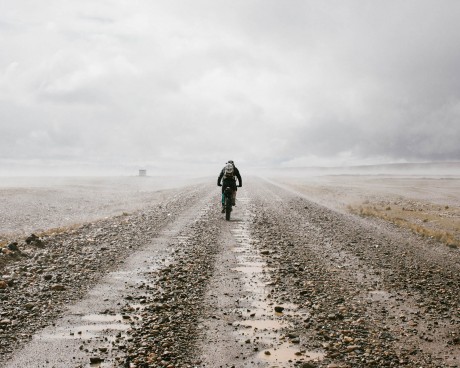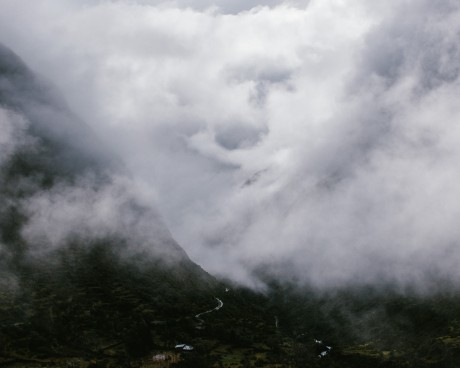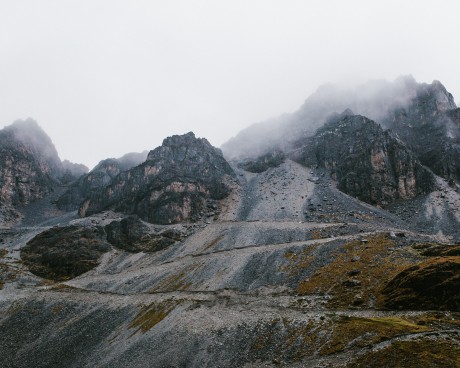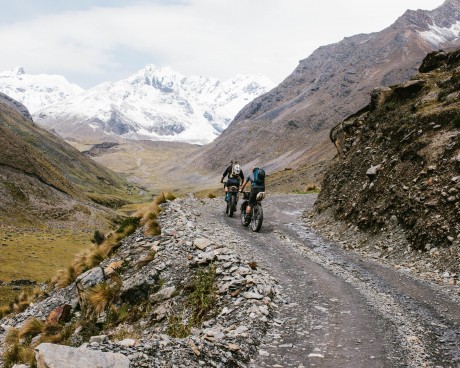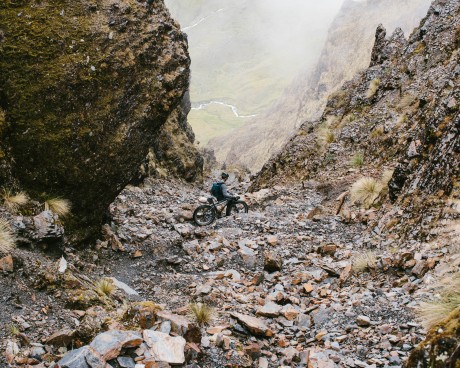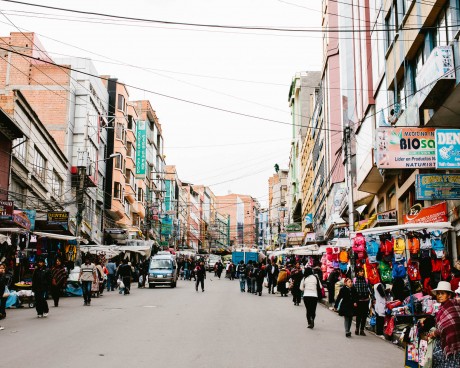
Sunchuli Pass: Preface
SECTION No1 Bolivia Fact Sheet
Boliva Basics
- One of two landlocked South American countries (the other is Paraguay).
- Independence was achieved in 1825.
- The country is named after Simon Bolivar, famed Latin American leader of Independence.
- Official languages are Spanish, Quechan, Aymara, and Guarani.
- Geographically, a little more than half the country is considered Llanos (plains), the other main geographical features are Andean, and Sub-Andean zones.
- Bolivia has established a rights for Nature / Law of the Rights of Mother Earth.
Mountain Ranges
Cordillera Apolobamba
- Mountain Range in Southern Andes.
- Located on the borderlands of Peru and Bolivia.
- Mining has starting to pick up in the region.
Chawpi Urqu
- 19,829 foot mountain on the Border of Bolivia and Peru.
- Highest in Apolobamba.
- Also known as Wisk’achani, which translates to “one with the viscacha” in Aymara.
Jach’a Waracha
- Mountain in Pelechucho Municipality.
- Name translates to “Big Wooden Camp Bed” in Aymara.
- 18,176 feet tall.
Akamani Mountain
- Southern Peak of the Apolobamba.
- This is a holy mountain to the Kallawaya.
- Sits a bit north of Titicaca.
ADDITIONAL SUPPORT FOR THIS PROJECT PROVIDED BYSRAM
Wanakuni Mountain
- 19,016 feet tall.
- Means, “one with the Guanaco” in Aymaran.
Altiplano
- High High High Plains region at 13,000 feet.
- Very arid climate.
- La Paz is the only major city on the Altiplano.
- Known as “The Tibet of the Americas”.
Places Visited on the Sunchuli Pass Route (SPR)
Charazani - SPR: Starting Point
- Pre-Incan ruins can be found near by the small village of Chari which is just outside of Charazani.
- Charazani is a kind of the hub for the Kallawaya.
- NGOs are there trying to help with development in Charazani.
Pelechuco SPR: Middle Point
- Founded by Jesuit Priests in 1560.
- Allegedly a German named Carlos Franck posted up here. The story goes he was a rubber industrialist and built a cool stone house and a fountain in the “town square”.
- Hot Springs/Thermal Waters can be found near here at Antaquilla.
Curva SPR: Finish Point
- Serves as the hub of municipality in the region.
- The ancestral birthplace of the Kallawaya.
Ulla Ulla National Reserve
- Average elevation of 13,000 feet.
- Area of 2000 km.
- Designated UNESCO biosphere in 1977.
- 12,000 or so Aymaras live within the reserve.
Lago Suches
- One of the largest alpine lakes (14.2 square kilometers and located above 15,000 feet) located below the mountain of Machu Such’i Qhuchi.
- Has a type of pencil catfish in it called the Such’i.
- Pencil catfish are considered to be parasitic, and are rumored to swim up people’s urethras.
Bautista Saavedra Province
- One of Bolivia’s poorer provinces.
- Kallawaya country.
- Population is growing steadily in the province.
Franz Tamayo Province
- Western Province.
- Home of the Ulla Ulla National Reserve.
- Pellechucho and Apolo are the main towns in this province.
People
Cholitas
- Both Aymara and Quecha women can be Cholitas.
- This is like a fashion and attitude.
- They have that bowler hat, shawl, skirt look.
- The style was born of Spanish Colonialist rule, forcing the women to dress more European. So the women did, but made it their own.
- The word comes from an old Spaniard term that was similar to Mestizo, so like half Spanish, half Native.
- They faced some discrimiation in the 19th-20th centuries, but have been accepted for the most part.
Kallawaya People
- Small Ethno-Religious group. These are the Shaman types . Traditional healers who live in the Bautusta Saavedra Province.
- Rich culture of herbal remedies, animal knowledge, arts, ritual, and mysticisim.
- Rumored to be the last direct descendants of the Tiwanaku .
- The Tiwanaku were the doctors to Incan Royalty.
- They use herbal, animal, and mystic remedies to treat all sorts of stuff.
- The men usually take the healer role, women help with pregnancies and weaving crafts that tell the story/represent the Andean Cosmovison.
- Kallawaya healers generally travel on foot.
- They have an esoteric language that is based in Quechua, but incorporates dead languages from pre-Incan and Incan times.
- The knowledge is passed down from father to son.
- Their practices are sought after all over Latin America.
- They are a protected UNESCO Group.
Yatiri Healers
- Differ from Kallawaya in that Yatiri are healers, and not part of an Ethnic Group.
- Tend to come from Aymara Ethnic group.
- They seem more of like a ritual healer, rather than the Kallaway who are more of a herbal healer.
- Cocoa leaves are the main ingredient in their healing system.
- Yatiri practice has become more prevalent in recent years as a symbol of defiance against Westernization.
- Pachamama is a central figure in Aymara culture. She is mother Earth.
- When you take too much from her, she takes reacts with natural disasters.
Pishtaco
- Mythical “boogyman” in the Andes.
- He appears as a very pale stranger.
- It kills people, mutilates them, and then sucks the fat out of their bodies.
- Spanish Colonial Missionaries were feared to be pishtacos.
- Fat is a sign of wealth, so Indigenous people were very leery of western anthropologists who wanted to study body types in fear they were gather data to give to pishtaco.
El Tio
- He is a devil deity who silver miners make offerings to in order to keep them safe in the silver mines of Cerro Rico.
- Miners lay booze, porn, llama blood, cigs, cocoa leaves at El Tio statues.
- If El Tio is not fed, he will have the mountain “eat” the miners.
- Reflection of Folk Catholicism in Latin America.
SECTION No2
Bus Tickets & Gasolina Elevation: 11,942 ft.
Our MSR International Stoves needed gasoline to cook the food that would sustain our efforts throughout our trip. No Gas = No Food = Dead. But gasoline is heavily subsidized by the Bolivian government and is not to be sold to foreigners. This meant begging, cajoling, and laying on the charm to a couple different gas station attendees before one of them agreed to sell us some. This also meant having gasoline spilled all over our hands, pants, and shoes.
With blackmarket gas in hand and our clothes now updated with an easy to ignite feature, we set off in search for the Altiplano bus station. Eventually, after walking through the electrical-outlet, the short-handled-broom, the purple-raw-meat, and the human-shaped-effigy-strapped-to-a-telephone sections of town, we came to the small squalid ticket station, where we waited in line with chickens, baby pigs, and some humans before buying tickets for the lifted offroad bus leaving the next morning at five AM to take us deep into the Bolivian Altiplano.
SECTION No3 A Typology of La Paz Mannequins
SECTION No4 Trans-Altiplano
We wake up (on purpose) at four-thirty. First we stumble in the quiet and dark to our own private classic continental breakfast; folded ham slices which taste like they were cured in ketchup, yogurts, 37 different shape-kinds of bread all of which were tasteless, undercooked variations on white flour, some jugo, instant coffee, a bowl of cocoa leaves, etc., then we load our bikes and gear into a pre-arranged minivan cab. The bus station is only two miles away but its at the top of giant La Paz-style hill. And it’s raining. On the way we stop at a banco. It’s still dark.
The bus station street is empty but the sidewalk is packed. Everyone is crowded together under various awnings and overhangs in an effort to wait and huddle somewhere not in the rain. Everything is shiny and stinks and covered in grime. Old dudes keep asking us if our Fat Boys are bikes. Because of the tires it seems like a reasonable question.
There is a big rock lying in the road. Some lady wearing a poncho rolls it with her foot a few yards down the street. Then she sweeps the muddy street for seemingly NO REASON at all.
A bus pulls up but it’s the Bronco though and not ours. Then another, also not ours. This one has the words ELEGANCE and LUXURY painted in giant letters across the front. Finally the Altiplano pulls up. It looks like a double decker but the bottom, it turns out, is just storage. It has big tires and reminds us of a Soviet military vehicle if a Soviet military vehicle was dressed like a flamboyant Canadian in Costa Rica on a Surf & Yoga Holiday.
We load our bikes into the very back and bottom. The hold is dark and metal and the door hinges make the whole thing difficult. Also, the door hole is an irregular shape. We have to lower our seatposts, twist our handlebars, take our tires off and stack the bikes on top of each other. We don’t have moving blankets or padding of ANY kind. It’s a pile of hate. It’s a seven-hour drive and it’s likely to get rowdy here in the way back. Just the streets of La Paz are gnarly. In the middle of loading our bikes it starts to rain even harder, also the the bus is parked in the middle of what is now a very busy and exhaust-choked street.
It smells rough inside the bus. Its total chaos. One guy has a flashlight. People with refrigerators and babies and all kinds of large oddly shaped shit tied to their backs are passing each other in the center aisle. It smells like goats and musk and the dry bitter smell of coca leaves. The bus leaves well before everyone is seated, in fact lots of people continue to mingle and stand and move around the whole way up and out the basin bowl that is La Paz.
It’s prehistorically humid. All the windows are fogged and steamy. Clouds are starting to form inside the bus.
I’m seated in the middle of a bunch old dudes sharing a thin plastic sandwich bag filled with coca leaves. The bag just kinda slowly makes its way from row to row and across the aisle. Each dude spends about five minutes with it, sifting-picking-and-plucking, then passes it along. A lady in wide brim straw hat with a fake rose strapped to the top talks non stop to nobody in particular. It’s not Spanish. She’s loud and has no teeth, and sounds like a bandsaw.
At some point a dapper dude in sharp looking clothes including a blazer and a scarf, stands up at the front of the bus, gets everyone’s attention and starts preaching. Or maybe teaching. Either way a lot of people stop talking and pay attention to him. And answer his many questions. He makes people laugh. Eventually it’s clear that he’s selling various pamphlets and a collection of small books. Presidents of Bolivia. Medicio Sana. Letras. Cultura General. There are 8 books in total. He passes a set to everyone who shows interest, they flip through them, keep the ones they want, pay him.
The Wizard next to me is tearing through a private baggie of coca leaves. He has no teeth and severe mumble. I catch him pissing into an empty coffee can he keeps in his pocket for this very purpose. When he pours the piss out it streaks across the windows behind us and sprays a few of his homies two rows back.
Across from me I watch a three foot tall guy in an Alpaca Andean Flap hat eat a rotten banana. He can barely see out of the window. He presses his hands against the window. He stares out the window. He loves the window, and it would seem, bananas. The dude next to him is listening to a transistor radio.
We stop in a town for ten minutes for a bathroom break and, apparently, to buy 20 pound bags of rice and plastic baby doll heads.
First we hit dirt roads. Then we hit the Andes. Then for hours we listen to the rhythmic pumping of air brakes. The roads don’t feature guardrails and these buses can lean like a motherfucker.
SECTION No5
Charazani Elevation: 10,499 ft.
Because the last 11 kilometers into Charazani dropped nearly three thousand feet, straight down, we decided to spend the night in town, taking a room in a habitacion with soft porn posters on the wall. In the morning we hire someone to drive us out of what was effectively a hole we accidentally fell into.

 PROJ Y Casting
PROJ Y Casting  PROJ Y WOF
PROJ Y WOF  Lunar Bikepacking
Lunar Bikepacking  Prospectus
Prospectus  The Dead Reckoning Book
The Dead Reckoning Book  starter pack
starter pack  Bikepacking 101
Bikepacking 101  Dead Reck is Dead
Dead Reck is Dead  Introduction
Introduction  Day 01
Day 01  Day 02
Day 02  Introduction
Introduction  Day 01
Day 01  Day 02
Day 02  Day 03
Day 03  Introduction
Introduction  Day 01
Day 01  Day 02
Day 02  Day 03
Day 03  Day 04
Day 04  Day 05
Day 05  Day 06
Day 06  Introduction
Introduction  Day 01
Day 01  Day 02
Day 02  Day 03
Day 03  Day 04
Day 04  Introduction
Introduction  Day 01
Day 01  Day 02
Day 02  Day 03
Day 03  Introduction
Introduction  Day 01
Day 01  Day 02
Day 02  Day 03
Day 03  Introduction
Introduction  Day 00
Day 00  Day 01
Day 01  Day 02
Day 02  Day 03
Day 03  Day 04
Day 04  Instagram Symposium
Instagram Symposium  Introduction
Introduction  Day 00
Day 00  Day 01
Day 01  Day 02
Day 02  Day 03
Day 03  Day 04
Day 04  Day 05
Day 05  Day 06
Day 06  Day 07
Day 07  Introduction
Introduction  Day 00
Day 00  Days 01-02
Days 01-02  Day 03
Day 03  Day 04
Day 04  Day 05
Day 05  Day 06
Day 06  Days 07-08
Days 07-08  Day 09
Day 09  Lord Nerd Beta
Lord Nerd Beta  Base Camp: Motel on Carroll, Dunedin
Base Camp: Motel on Carroll, Dunedin  Day 01: Dunedin to Danseys Inn
Day 01: Dunedin to Danseys Inn  Day 02: Danseys Pass to Ida Railway Hut
Day 02: Danseys Pass to Ida Railway Hut  Day 03: Ida Railway Hut to Omarama Pass
Day 03: Ida Railway Hut to Omarama Pass  Day 04: Omarama to Huxley Forks
Day 04: Omarama to Huxley Forks  Day 05: Huxely Forks to Brodrick Pass
Day 05: Huxely Forks to Brodrick Pass  Day 06: Brodrick Pass to Wanaka
Day 06: Brodrick Pass to Wanaka  Lord Nerd Beta
Lord Nerd Beta  Preface
Preface  Day 01: Charazani to Hichocollo
Day 01: Charazani to Hichocollo  Day 02: Hichocollo to Pelechuco
Day 02: Hichocollo to Pelechuco  Day 03: Pelechuco to Mountainside Bivouac #1
Day 03: Pelechuco to Mountainside Bivouac #1  Day 04: Mountainside Bivouac #1 to Hilo Hilo
Day 04: Mountainside Bivouac #1 to Hilo Hilo  Day 05: Hilo Hilo to Mountainside Bivouac #2
Day 05: Hilo Hilo to Mountainside Bivouac #2  Day 06: Mountainside Bivouac #2 to Curva
Day 06: Mountainside Bivouac #2 to Curva  Outro
Outro  Lord Nerd Beta
Lord Nerd Beta  Day 01: Oasis to Bishop
Day 01: Oasis to Bishop  Day 02: Bishop to North Lake
Day 02: Bishop to North Lake  Day 03: North Lake to Piute Pass and Back to Piute Lake
Day 03: North Lake to Piute Pass and Back to Piute Lake  Day 04: Piute Lake to Bishop
Day 04: Piute Lake to Bishop  Day 05: Mono Hot Springs
Day 05: Mono Hot Springs  Lord Nerd Beta
Lord Nerd Beta  Day 00: The Approach
Day 00: The Approach  Day 01: Tyax Lodge to Iron Pass
Day 01: Tyax Lodge to Iron Pass  Day 02: Iron Pass to Graveyard Valley
Day 02: Iron Pass to Graveyard Valley  Day 03: Graveyard Valley to Trigger Lake
Day 03: Graveyard Valley to Trigger Lake  Day 04: Trigger Lake to Tyax Lodge
Day 04: Trigger Lake to Tyax Lodge  Flooded with Feeling
Flooded with Feeling  Wilderness
Wilderness  Mike Cherney on Black Bears
Mike Cherney on Black Bears  Rope Swing
Rope Swing  Slash Piles
Slash Piles  Nylon
Nylon  Conversations with a Black Bear
Conversations with a Black Bear  US Route 93
US Route 93  Turnagain Mud Flats
Turnagain Mud Flats  Bushwhacking in British Columbia
Bushwhacking in British Columbia  Men’s Penury
Men’s Penury  Bob Dittler et. al.
Bob Dittler et. al.  Bushwhacking in the MSOJ
Bushwhacking in the MSOJ  Mike Cherney’s Knife
Mike Cherney’s Knife  Hideout, UT
Hideout, UT  Hoover Dam
Hoover Dam  Shoe Tree
Shoe Tree  Destruction
Destruction  The Siskiyou Mountain Club
The Siskiyou Mountain Club  Coral Pink Sand Dunes State Park
Coral Pink Sand Dunes State Park  EN 417 – Normes Européennes 417 – The Lindal Valve
EN 417 – Normes Européennes 417 – The Lindal Valve  Wolf Satellite
Wolf Satellite  Itchy and Scratchy
Itchy and Scratchy  Tanoak Dust
Tanoak Dust  Lake Havasu
Lake Havasu  Knife Fighting
Knife Fighting  The Comfort Inn Covenant
The Comfort Inn Covenant  The Wrong/Right Way To Experience Montauk
The Wrong/Right Way To Experience Montauk  Ohiopyle Falls
Ohiopyle Falls  Allosaurus via Lean-to
Allosaurus via Lean-to  Lyle Ruterbories, Glacier National Park Ranger
Lyle Ruterbories, Glacier National Park Ranger  Water Interface Experimentation (WIE)
Water Interface Experimentation (WIE)  OSOs & UOSOs e.g., Mt. Oberlin
OSOs & UOSOs e.g., Mt. Oberlin  Louisiana Custom Cars
Louisiana Custom Cars  Archaeologizing, Pt. II
Archaeologizing, Pt. II  Archaeologizing, Pt. I
Archaeologizing, Pt. I  Mather Point
Mather Point  Sarah Plummer Lemmon & Matt Hall
Sarah Plummer Lemmon & Matt Hall  Kangaroo Lake and Fran
Kangaroo Lake and Fran  Minor Religions of the Mt. Shasta Region
Minor Religions of the Mt. Shasta Region  The Fist Bump
The Fist Bump  The Ideal Shelter
The Ideal Shelter  Headwaters of the Sacramento River
Headwaters of the Sacramento River  Buckle Bunnies
Buckle Bunnies  DFKWA: Baldface Creek - Part I
DFKWA: Baldface Creek - Part I  Mule Deer Radio Collaring
Mule Deer Radio Collaring  The Disappearance of Everett Ruess
The Disappearance of Everett Ruess  Dall Sheep Kebabs
Dall Sheep Kebabs  The Ideal Woodsman Knife
The Ideal Woodsman Knife  DFKWA: Rough and Ready Creek - Part I
DFKWA: Rough and Ready Creek - Part I  Rowdy Water
Rowdy Water  Killing a Mountain Caribou
Killing a Mountain Caribou  Boredom, Slingshots, and Prairie Dogs
Boredom, Slingshots, and Prairie Dogs  We Would Like to Visit
We Would Like to Visit  Black Bear Ranch
Black Bear Ranch  Origins
Origins  The Heart of the Klamath
The Heart of the Klamath  Skid Town Bicycles
Skid Town Bicycles  Low Stress Management
Low Stress Management  CLUB MACHO
CLUB MACHO  Club Macho Ep. 01
Club Macho Ep. 01  Club Macho Ep. 02
Club Macho Ep. 02  Club Macho Ep. 03
Club Macho Ep. 03  Cumberland Permanent
Cumberland Permanent  Iron Goat Permanent
Iron Goat Permanent  Natchez Trace Permanent
Natchez Trace Permanent  Trail of Tears Permanent
Trail of Tears Permanent  (Dis)Enchanted Rock Permanent
(Dis)Enchanted Rock Permanent  MSOJ Permanent
MSOJ Permanent  Shorty Peak Lookout
Shorty Peak Lookout  Deer Ridge Lookout
Deer Ridge Lookout  Arid Peak Lookout
Arid Peak Lookout  Flag Point Lookout
Flag Point Lookout  Umpqua Hot Springs
Umpqua Hot Springs  Cougar Hot Springs
Cougar Hot Springs  Bagby Hot Springs
Bagby Hot Springs  Goldbug Hot Springs
Goldbug Hot Springs  Ft. Bridger Rendezvous
Ft. Bridger Rendezvous  Corndoggin’ Castle Lake
Corndoggin’ Castle Lake  Kangaroo Lake
Kangaroo Lake  The Narrows
The Narrows  Matthews Creek
Matthews Creek  Introduction
Introduction 


